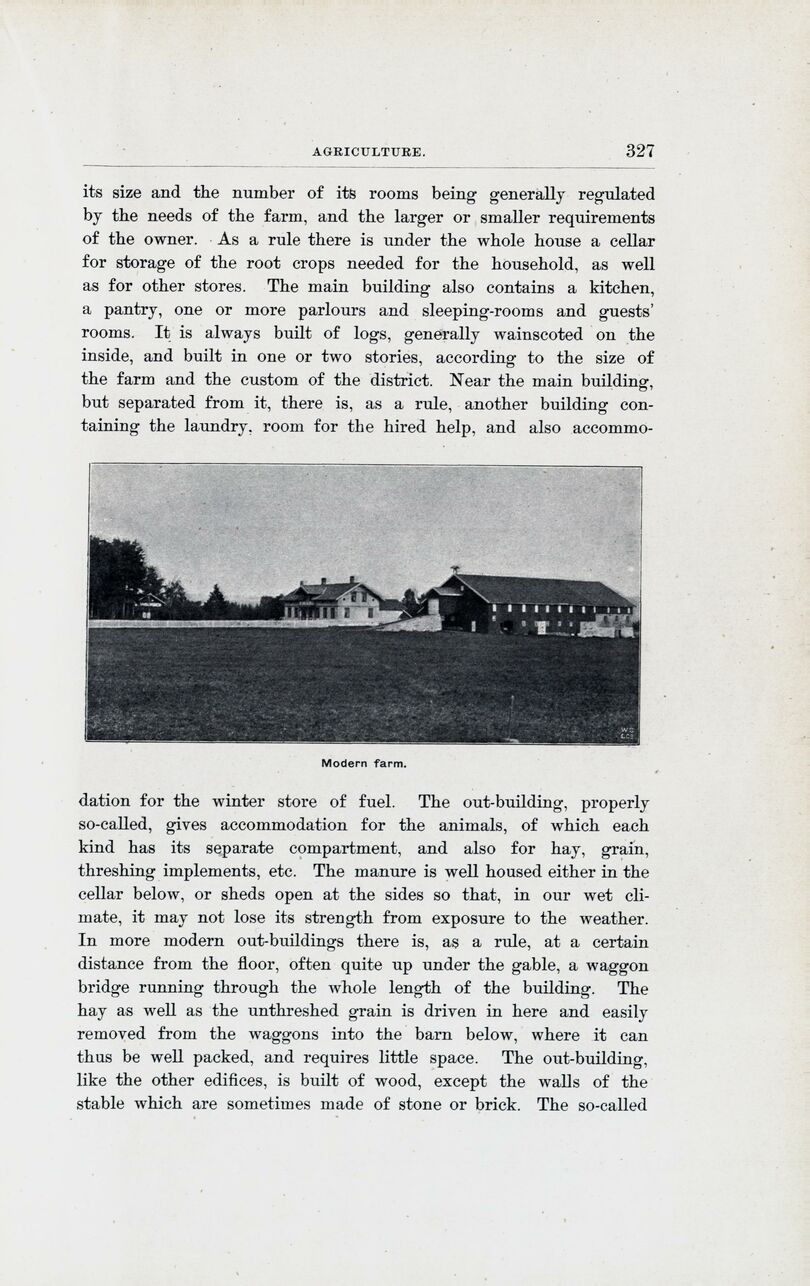
Full resolution (JPEG) - On this page / på denna sida - Agriculture, by G. Tandberg

<< prev. page << föreg. sida << >> nästa sida >> next page >>
Below is the raw OCR text
from the above scanned image.
Do you see an error? Proofread the page now!
Här nedan syns maskintolkade texten från faksimilbilden ovan.
Ser du något fel? Korrekturläs sidan nu!
This page has been proofread at least once.
(diff)
(history)
Denna sida har korrekturlästs minst en gång.
(skillnad)
(historik)
its size and the number of its rooms being generally regulated
by the needs of the farm, and the larger or smaller requirements
of the owner. As a rule there is under the whole house a cellar
for storage of the root crops needed for the household, as well
as for other stores. The main building also contains a kitchen,
a pantry, one or more parlours and sleeping-rooms and guests
rooms. It is always built of logs, generally wainscoted on the
inside, and built in one or two stories, according to the size of
the farm and the custom of the district. Near the main building,
but separated from it, there is, as a rule, another building
containing the laundry, room for the hired help, and also
 |
| Modern farm. |
<< prev. page << föreg. sida << >> nästa sida >> next page >>